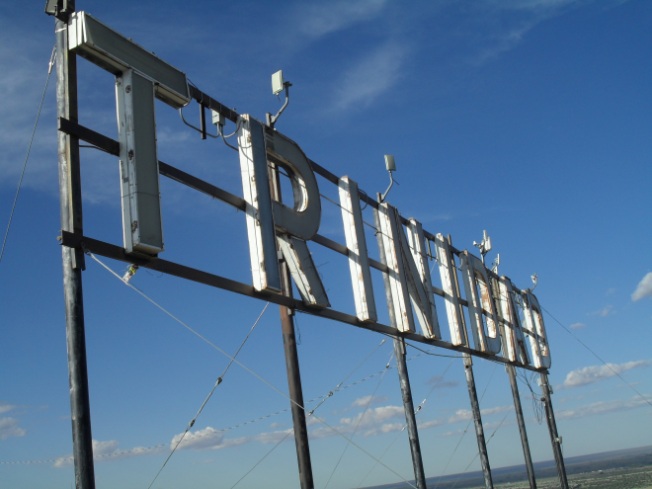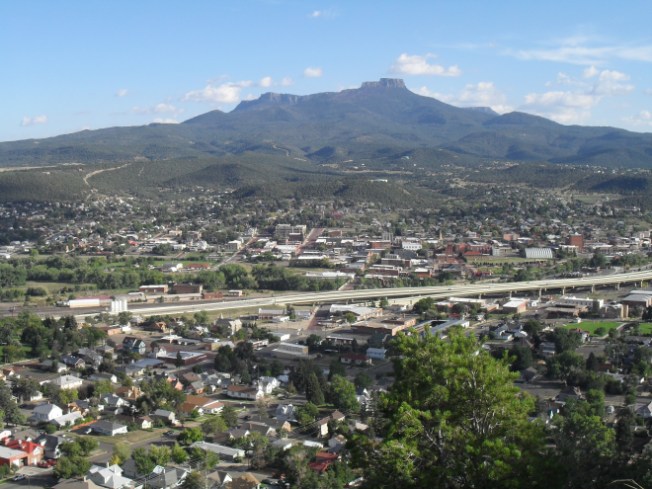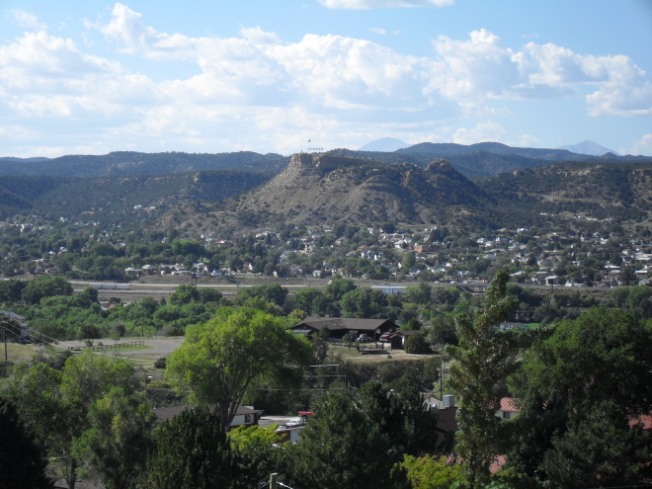The Man and I were in Las Vegas, NM, and we decided to go to Trinidad, CO. We got on I-25 and headed north.
It was late afternoon by the time we got started, and I was tired of driving well outside of Raton. I knew we had the Raton Pass ahead of us, and I didn’t want to make that mountain crossing in the dark. I’d looked at the map before we left Las Vegas and seen the last rest area in New Mexico on I-25 was less than twenty miles south of Raton. I needed to pee anyway, so I decided to stop at the rest area and check it out.
I knew there was a Wal-Mart in Raton, and we could probably park there overnight. However, I wanted to cook dinner, and I always feel weird cooking in the parking lots of stores. Even if we decided not to spend the night at the rest area, we could certainly cook dinner there. No one tends to blink an eye at people having a picnic at a rest stop.
I pulled into the reast area on the east side of the highway and found a spot to park. I walked briskly to the toilets while The Man took the dog out. The restroom was really clean, with flush toilets and sinks complete with running water for hand washing.
When I went back outside and had a better look around, I realized everything in the rest area was really clean. There was no litter on the ground and no graffitti.
 In addition to the building housing the restrooms, there are several covered picnic table there. The picnic pavillions have low stone walls to block the wind and there are many trees throughout the rest stop, making the area pretty and providing shade.
In addition to the building housing the restrooms, there are several covered picnic table there. The picnic pavillions have low stone walls to block the wind and there are many trees throughout the rest stop, making the area pretty and providing shade.
As I looked around, I saw The Man and the dog in a flat, treeless area at the back of the rest area, so I walked out to meet them. Beyond the flat area were train tracks. As we stood there, we heard a train a comin’. It got closer, and I saw it was an Amtrack.
It’s a people train! I exclaimed. I stood tall and waved vigorously as the train passed. I couldn’t tell if anyone waved back–or if indeed there were passengers on the train–but I had a great time waving and imagining passengers wondering who I was and why I was there.
We walked back to prepare our dinner of eggs and cheese and onions and zucchini on tortillas. We decided to cook next to the van instead of hauling all our supplies and equipmemt down to one of the picnic pavillions. In minutes, we had a table and our stove set up, and onions were sizzling in our cast iron skillet.
After eating and doing my share of the cleanup, I didn’t want to drive anymore. Let’s stay here tonight, I suggested, and The Man agreed.
While the rest area is developed and well-lit, it seemed better than a Wal-Mart parking lot. Maybe the trees helped. Maybe it wasn’t quite so hot because there wasn’t so much asphalt. Maybe I was just dog tired. In any case, I slept well, despite the idling big rigs parked rigth behind us and the comings and goings of drivers who needed to stretch their legs or take a bathroom break in the middle of the night.
 In the morning, I snapped a few photos. I’ve noticed there’s often at least one historic marker at New Mexico rest areas. This stop has a marker with information abouth the nearby Clifton House site. According to Wikipedia,
In the morning, I snapped a few photos. I’ve noticed there’s often at least one historic marker at New Mexico rest areas. This stop has a marker with information abouth the nearby Clifton House site. According to Wikipedia,
The Clifton House was an important overnight stage stop on the Mountain Branch of the Santa Fe Trail. It was located in Colfax County, New Mexico about six miles south of Raton, New Mexico, on the Canadian River. The site is located at mile marker 344 of U.S. Route 64, just off of exit 446 on Interstate 25.
 The other side of the marker shows a “Points of Interest” map of the area, and I saw we were quite close to the mountain branch of the Santa Fe Trail. Neat!
The other side of the marker shows a “Points of Interest” map of the area, and I saw we were quite close to the mountain branch of the Santa Fe Trail. Neat!
When I finished taking photos, I found The Man and the dog were ready to go. I climbed into the driver’s seat, and we headed to Raton in search of coffee.
We crossed the Raton Pass and stopped at the scenic overlook on our way to Trinidad.
I took all the photos in this post.






